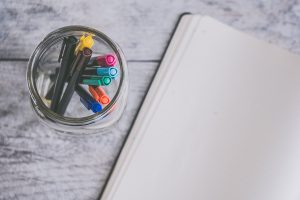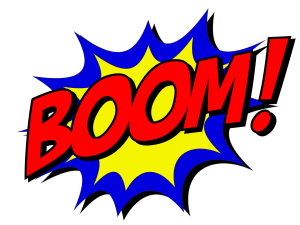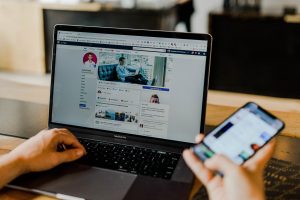Multimodal Writing with Medium: A User’s Guide with Readings

The Multimodal Reflection Essay Project
Since we have now spent some time looking at what constitutes a multimodal essay, this chapter will introduce resources for crafting a multimodal essay of your own.
Choosing the right format for your project
Note that this sample project uses Medium, but this assignment can be accomplished in a variety of ways, including PowerPoint, a Word Document with embedded videos, or a variety of other formats. If none of these sound right, explore the Excelsior Online Writing Lab’s resources for multimodal projects. Each resource has a list of strategies and links to programs that can be used to curate programs of this type.
How Can Medium Be of Use? Why Are Multimodal Essays Important in Composition I?
Medium is a program that pulls items from the general internet or from your computer/mobile device and easily weaves them into a unified document. The program allows users to create a multimodal digital essay with relative ease. As such, it presents a wonderful opportunity for you to demonstrate your understanding of course content beyond a traditional essay or PowerPoint presentation. Perhaps more importantly, the essays that you can create will better reflect the kind of digital content that you encounter and create in the “real world.”

Now, your paper will be completely transformed!!!!!
Okay, maybe there’s more to it than that, but traditional essays can be modified into a digital project with very few adjustments.
We exist in a world where the idea of literacy itself is undergoing a rapid transformation. As Daniel Keller notes in Chasing Literacy: Reading and Writing in an Age of Acceleration, “Literacies include a diversity of language and culture as well as a range of expressive modes offered by various media. Instead of literacy being tied to alphabetic text and a set of encoding-decoding skills, literacy is recognized in a range of semiotic modes and in the various life domains of schools, homes, workplaces, and public spaces, where literacies are valued and used in different ways” (32–3). As such, projects like Medium essays are an essential component of helping students become fluid communicators in a world in which communication relies upon knowing how to employ the written word in conjunction with a host of other digital elements.

This is one of the reasons why Medium projects are often important components of composition and literature courses. Such projects help students write in a mode that is more truly reflective of the sort of public-facing informal and formal compositions that occur in the world at large. In the process, they answer the call that scholars like Danielle Nicole DeVoss, Elyse Eidman-Aadahl, and Troy Hicks make in Because Digital Writing Matters: Improving Student Writing in Online and Multimedia Environments: “Writing instruction appropriate for the world today requires us to consider what new skills and dispositions students might need for the digital age” (11). In other words, because existing in the professional world will require you to be a fluid creator of multimodal texts, building this skillset is an essential goal of Composition I.
Such assignments will allow you to exit the class with a deeper understanding of what an effective digital text looks like, how images, videos, document design, hyperlinks, etc. can and need to be used effectively to deepen the effectiveness of the text that they are creating. In learning these skills, they also create a product that more fully engages the content they are discussing than would be possible via a traditional media.

The program is widely used by a variety of professional writers across a host of genres. In fact, you can find work from some of FSW’s own faculty members on Medium. If you look at the story below, you’ll see work from English Professor Leonard Owens III.
In short, Medium is a fun, easy-to-use, and engaging program that will allow you to create texts alongside other professional writers. Furthermore, because of how easy the program is to use, it presents an ideal stepping stone project for folks who are interested in using more digital projects but unsure about how to start.

How Do I Use Medium?
You can register for Medium with any email account, including your FSW Bucs Gmail account.
Creating content on Medium is simple and easy.
- Click here for an overview of how to create content on Medium on a computer or via a smartphone
- Click here for an explanation of how to embed content and use the various composition tools
- Click here for an overview on how to use images specifically (including creating alt text and captions)
- Click here for an overview on how to use embeds specifically
Consider how visible you would like your Medium project to be
You can make your project visible to anyone on the web, or you can choose to make your project unlisted (so that only someone with the URL can access it).
Want to cut right to the chase? The following video offers a comprehensive overview of how to use Medium.
If you are creating a project on Medium, your instructor is also a great resource for ideas about how to create this project successfully. Be sure to bring up questions or concerns so that you and your peers can work through potential issues together.
The Multimodal Reflection Essay: An end-of-Semester Project
“It’s a dangerous business . . . going out your door. You step onto the road, and if you don’t keep your feet, there’s no knowing where you might be swept off to.”
― J.R.R. Tolkien, The Lord of the Rings
Important: The following overview is of one potential Medium project. Please note that your professor may or may not choose to use this assignment. As the above material notes, Medium can be used for a myriad of different project types, all of which will use the same concepts covered in this chapter.
As Tolkien reminds us, life is full of unexpected adventures. This semester, I imagine, has been full of many such events as you have journeyed through what may have been your very first semester of college. This project, then, will offer you an opportunity to 1) take a retrospective look at your path up to this point, 2) think about how you have changed along the way, and 3) consider where your next steps may lead. Complete the work well and grow as a writer, of course, but also, I hope that you use this as an opportunity to take stock of how far you’ve come and envision the destinations to which your road may lead.
To meet the objectives noted above, this project should focus on your development as a student and/or writer throughout the semester, and you will want to integrate multimedia at every stage of your journey to function as a digital parallel to your growth. These digital components should help to further your narrative by reinforcing themes and dominant impressions that you are trying to convey about your experiences during each phase of the semester.
The subject matter of this project can be kept strictly to our writing projects and your journey as a writer—from incorporating visual details, to organizing and crafting multimodal projects, to conducting research and citing your sources in MLA format, etc. Similarly, you may also focus on how you’ve grown as a student via other routes in the class. For example, you might discuss how losing points on an assignment taught you to focus on carefully reviewing assignment guidelines. If you got into absence trouble, you could talk about this experience and how you were able to overcome the problem. If you had a low grade, you might discuss your initial shock and how you responded to this challenge. You could also talk about changes in your perspectives on writing or on yourself as a writer as a result of your experiences in the class. Similarly, you could revisit your experiences interacting with peers in our classroom community and how that has impacted your performance as a student. Really, anything is fair game here, and you should use this as an opportunity to take a step back and reflect on a significant moment in your journey as a writer and college student.
How Should I Organize This?
Before you get started, decide whether you want to create a narrative or non-narrative work because these will require two very different approaches: a narrative project will tell a story (e.g., from the start of the semester to the present) while a non-narrative project will organize and divide the project topically (e.g., focusing on different aspects of your experiences or on major attributes/skills that you honed/developed, etc.).
Be Sure to Caption the Images and Videos
To ensure that your sources are used responsibly and to make them accessible to all potential readers, it is essential that you add brief captions below all images, videos, and gifs that identifies and explains each piece of media (e.g., Still image from the opening of Harry Potter and the Deathly Hallows). These captions should tell the reader where each piece of digital content is from, and you should also hyperlink out to the original content (if applicable). See the images in this chapter for visual examples.
Add Alt Text for Images
As Rachel Donegan’s explains in “The Rhetorical Possibilities of Accessibility,” you should use alt text to describe images for readers with visual impairments who rely on screen readers. This alt text should be a brief description that provides enough context for the reader to understand what appears in the image. The alt text is similar to the captions noted above and often involves a bit more detail.
Add Section Headings to Make Your Essay Easily Navigable
Donegan also notes that you should include headings for each segment of your essay that allow a busy reader to quickly move through the content and find relevant information. To this end, your section headings should help to convey what that portion of the class was like for you (e.g., Smooth Sailing Through Essay One).
What About the Writing?
Along with the multimodal images, you will interweave at least 750 of your own words to create a compelling and coherent essay. Again, your writing should not be separate from the digital items, but interspersed throughout. In other words, you want the digital elements to play a role that is at the same level as your textual support. They should help reinforce and expand the narrative that you are conveying—working in harmony to create clear and focused dominant impressions for each of your major points.
In terms of the introduction and conclusion, a good strategy is to begin on your first day of class (outlining what you expected, hoped for, were worried about, etc.) and then finish by looking forward to your future—as a student and/or writer.
How Do I Turn This in?
You must submit a link to your self-portrait to Canvas by copying and pasting the link into the assignment textbox
Remember to publish your project once you have completed it (this makes the URL public). You also have the option of making the project unlisted so that only people with a link can access it.
Sample Student Essays
Below, you can find essays that students have successfully created for this assignment in the past. However, be sure to review the specific guidelines that your professor has created for this project. The sample assignments are merely one iteration of the assignment, and your project may have different requirements and outcomes than those demonstrated below:
Projects with a narrative structure (organized by chronology)
- Alexis Machado, “The Fears, Faults, and Facts of Composition One”
- Ana Diaz, “ENC! A Journey that I Almost Failed”
- Gabriel Cartelli, “Dual Enrollment: A Different Take”
- Aida Khan, “My Journey Through Composition I”
Projects with a topical structure (organized by major concepts and/or events)
- Mia Landolfi, “A Buc’s Journey”
- Diara Mercedes, “Self-Portrait Essay: Freedom and Time Management, Their Helpfulness and Hindrance”
- Camila Gonzalez, “A Girl from Mars: A Semester in College”
Further Reading: Medium Essays on Art, Pop Culture, and Life
Here are a list of readings on a variety of topics that have been published on Medium. Take some time to read through them, and as you do, think about how the authors use digital elements to enhance and deepen the stories that they are telling.
General Readings
Readings from Past/Present/Pop, a digital magazine featuring the work of FSW Honors Scholar Program students, edited by Prof. Leonard Owens III
- Paige Wilson, “A Brief History of Fast Fashion”
- Sophia Clancy, “Jeans: Walking Through the Twentieth Century to Now”
- Kaylee Ziegelbauer, “Cinematic Reboots in Pop Culture”
- Carson Clancy, “The Metaverse — Is It The Future?”
- Kendall Carrico, “A Deep Dive Into TikTok”
- Ethan Rider, “Battle Passes: Should Gaming Be So Subscription-Based?”
- Andrew Vasile, “Why Esports is on the Rise”
- Rachel Suarez, “Are Teen Movies a Thing of the Past?”
- Jacob McCurry, “From Niche To Mainstream: Animal Crossing New Horizons”
- Melanie Maugeri, “Thrifting isn’t Just Another Meaningless Gen Z Trend”
- Alexander Walsh, “Pickleball, From a Tennis Player’s Perspective”
- Joshua Starmer, “Klay Thompson: A History of the Younger Splash Brother”
- Nadine Gil Cardoso, “BTS’s Hip-Hop Roots”
- Anna E. H., “Binge-watching Culture and the Pandemic”
Final Thoughts
Medium is just one of many digital writing platforms, and as the previous section noted, you are using many such platforms already on a daily basis (probably even at intervals as you read through this chapter!). What is most important is that you use technology in thoughtful ways over the course of your life. These sorts of composition platforms offer an unparalleled tool for expanding and growing the stories that you tell in ever more nuanced and interactive ways. I speak for everyone in the English Department when I say that I hope this project is but a stepping stone on your journey as a writer.

Sources Used to Create This Chapter
Media Resources
Any media resources not documented here were part of the original chapter from which this section has been adapted.
Videos
“Intro to Medium.com Blogging Platform.” YouTube. Uploaded by Astral Web, Inc. This work has been shared under the following license: Attribution 3.0 United States (CC BY 3.0 US)
Images
- “Boom!” image, created by Andrew Martin from Pixabay
- Photo of pens and paper, by Jessica Lewis on Unsplash
- Photo of laptop and cellphone, by Austin Distel on Unsplash
- “Dreaming of the Digital Humanities” Gif. Scott Ortolano, created on Giphy.
- “Wait! There’s More” Gif. Scott Ortolano, created on Giphy.
- “Screen Five” Gif. Scott Ortolano, created on Giphy.
Works Referenced
DeVoss, Danielle Nicole, et al. Because Digital Writing Matters: Improving Student Writing in Online and Multimedia Environments. National Writing Project. Jossey-Bass, 2010.
Keller, Daniel. Chasing Literacy: Reading and Writing in an Age of Acceleration, Utah State UP, 2013.
“Multi-Modal Writing.” Excelsior Online Writing Lab (OWL). 2022. This resource is licensed under a Creative Commons Attribution-4.0 International License.
Past/Present/Pop. Edited by Leonard Owens III. Medium, 2022.
